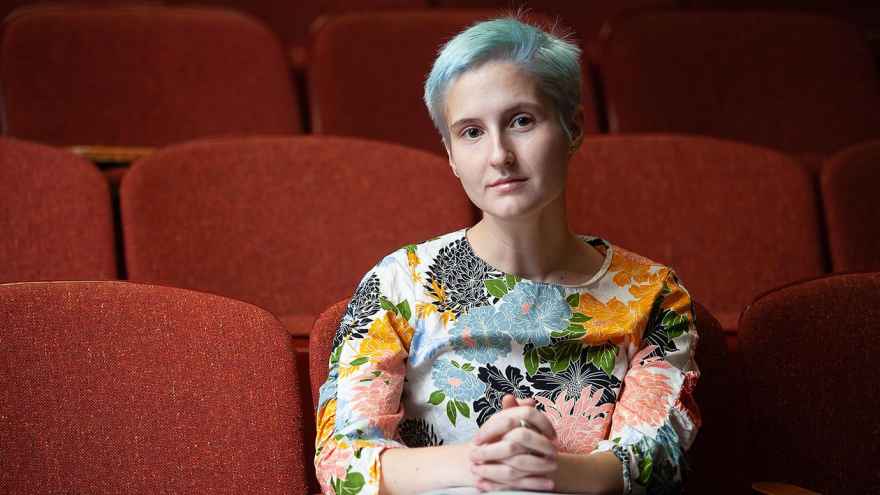Gates Cambridge Scholar to Study Science Behind Art Conservation

The following was first published in UChicago News on February 21, 2019.
Ellen Purdy has always been passionate about art, inspired by childhood trips to the museum, but the fourth-year student wasn’t sure how to incorporate that lifelong interest into her chemistry coursework. It wasn’t until she studied abroad in Spain—and learned about the science behind art conservation—that her unique academic path began to take shape.
“I’ve always had an interest in art and art history because it was a particular passion of my grandfather's,” Purdy said. “He brought me along to museums and told me a lot about his favorite artists. It has really been a part of my life for as long as I can remember.”
A newly named recipient of the prestigious Gates Cambridge Scholarship, Purdy will learn more about the intersections between science and art next year, when she pursues a master of philosophy in chemistry at the University of Cambridge. The highly competitive scholarship, established by a donation from the Bill and Melinda Gates Foundation, was awarded this year to 34 academically distinguished U.S. students who have proven themselves as leaders and are committed to improving the lives of others.
“We take great pride that Ellen has been recognized with this prestigious honor and will have the opportunity to build upon the interdisciplinary work in conservation science she began at the College,” said John W. Boyer, dean of the College. “We look forward to seeing how Ellen’s time at Cambridge shapes her long-term interests and the impact she will have on her field.”
Purdy first learned about conservation science while studying abroad in Madrid and Seville as part of a unique eight-week Foreign Language Acquisition Grant program. Soon after, she decided to declare an art history minor on top of her existing chemistry major.
“I think that art plays a really important role in how people relate to the world, and it’s what makes life interesting for me. Research in this field is both important to society writ large and something that I am personally passionate about,” Purdy said.
Her interest in conservation science was solidified after participating in the Suzanne Deal Booth Seminar, a unique conservation course at UChicago taught by Maria Kokkori, a conservation scientist at the Art Institute of Chicago. In that class, Purdy had the opportunity to see up close the process of restoring art, and her final project involved using spectroscopy to analyze a Kandinsky painting.
At Cambridge, she plans to work with Prof. Stephen Elliott, a leading scholar of spectroscopy—the study of the interaction between matter and electromagnetic radiation. Purdy is especially interested in Elliott’s work using spectroscopy to preserve art.
“This technique involves scattering light off a surface, exciting electrons and then measuring the energies of particles emitted when these electrons drop back down to lower energy levels,” Purdy explained. “It allows us to identify different paint pigments and understand how pigments were applied by the artist. It has the potential to be nondestructive, meaning that the analysis process doesn’t damage a sample, which is really important for conservation work.”
Purdy was first exposed to spectroscopy working in a lab with Steven Sibener, the Carl William Eisendrath Distinguished Service Professor in Chemistry at UChicago. Alongside Sibener, Purdy used lasers to destroy chemicals resembling nerve agents, and then used spectroscopy to analyze what particles remained.
“Ellen’s creative approach to her science, her independence and drive are, frankly, typical of the very best graduate students that we see in the sciences at UChicago. I am personally honored to have helped guide her as she took her first steps as an independent researcher, and look forward to seeing her blossom into a next-generation leader in her chosen field of endeavor as a Gates Cambridge Scholar,” Sibener said.
After completing the one-year program at Cambridge, Purdy aims to pursue further graduate education in chemistry and art history, in the hopes of someday working in a museum conservation lab.
After the program in Cambridge concludes, Ellen Purdy aims to pursue further graduate education in chemistry and art history.
Photo by Eddie Quinones
“I’m fascinated by what scientific analysis can tell us about works of art and how it can be used to preserve these works for future generations. Conservation work is not often emphasized in exhibitions, but without it, the art we see would look a lot different and much of it would not exist,” Purdy said.
Purdy received application support from the College Center for Research and Fellowships, which guides candidates through rigorous application and interview processes for nationally competitive fellowships.